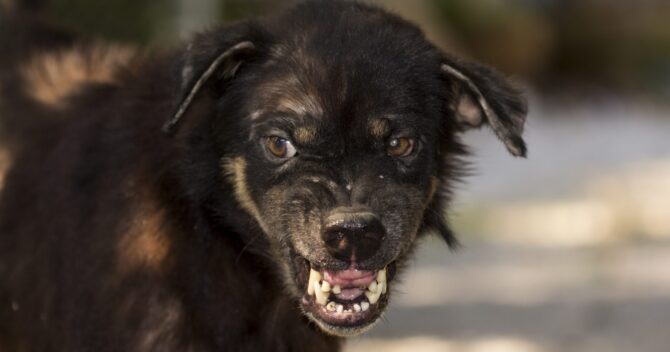Rabies in a dog - what exactly is it?
Rabies (Latin rabies, Greek lyssa) is an infectious disease zoonotic, with an acute course. It exists in seven pathogenic biotypes caused by the RNA virus of the family Rhabdoviridae, of the genus lyssaviruses. Rabies virus is mainly found in the central nervous system, in the skin and saliva.
Routes of transmission of the rabies virus
Infection is generally spread from individual to individual by an animal bite, who had the virus in their saliva. The time of disease development depends on many factors, including:
- virulence, i.e. virulence of the virus,
- the body's resistance,
- the amount of virus introduced into the wound,
- wound location.
In infected animals, the virus is 90% detectable in saliva. Its presence can be detected from one week to three days before the onset of clinical symptoms. The incubation period of the disease in dogs is assumed to be from 7 to 150 days, but most often around 30 days.
In addition to saliva, a sick animal may also excrete rabies virus in small amounts via urine, faeces or blood. Consequently, it primarily infects the skin and, through it, infects objects in direct contact with it: a bowl, collar or harness, leash, muzzle, bedding.
Rabies in a dog - clinical signs
There are two basic clinical forms of rabies: violent (rage) manifesting in extreme aggression from an infected dog, and paralytic (silent). From the first clinical symptoms appear, the disease usually lasts from 1 to 7 days. It always ends in death (due to respiratory failure). In the first stage of violent form, the animal shows changes in behavior, mainly lack of interest in eating or drinking, it has dilated pupils, the third eyelid is falling out and strabismus occurs. In the next stage - agitation - there is an increase in aggressiveness, hyperactivity and anxiety. The dog becomes extremely dangerous to the environment, attacks people and animals, eats inedible items, runs away from the house, makes strange sounds, has orientation disorders. There is also drooling, problems with swallowing and, consequently, foam on the mouth. In the last stage - paralysis - the symptoms of aggression disappear, while impaired movement coordination, seizures and paralysis appear, which over time affect almost all parts of the body and lead to death.
Silent form - lasts an average of 2-4 days (less frequently up to 10 days) and is characterized by a very rapid transition of the initial symptoms to the last paralytic stage (excluding the period of agitation and attacks of frenzy).
Rabies in a dog - diagnosis
Despite specific clinical symptoms, laboratory tests carried out by immunofluorescence (FAT) and virus isolation tests are essential in the diagnosis of rabies. Unfortunately, only post-mortem examination of the brain can be absolutely certain.
Any suspicion of rabies infection should be immediately reported to a veterinarian who determines the further procedure. In the event of uncertainty as to the continuity of vaccinations, the poviat veterinarian issues a decision to subject the suspected dog to veterinary medical observation. In general, this observation takes place at the designated veterinary facility. If symptoms of rabies are confirmed during the observation, the district veterinarian may decide to put the infected dog to sleep immediately. A regularly vaccinated animal may also be monitored, although it is assumed not to be a threat to the environment.
Rabies prevention in a nutshell
- since the times of Louis Pasteur, rabies prevention is based on preventive vaccinations,
- every year WHO develops and places stringent requirements on vaccines against rabies,
- there is no cure for rabies!
- in our country annual vaccination of the dog against rabies is mandatory!
- protective vaccination of the dog against rabies can be ordered in any veterinary office,
- the first vaccination should be performed in the 15th week of the dog's life,
- only healthy dogs that are not burdened with any parasitic diseases or other diseases can be vaccinated,
- the dog should be monitored immediately after vaccination for anaphylactic reactions or severe post-vaccination reactions,
- by resigning from vaccinating the dog against rabies, we expose the pet (and its surroundings) to mortal danger.
Maybe you'll like it:



